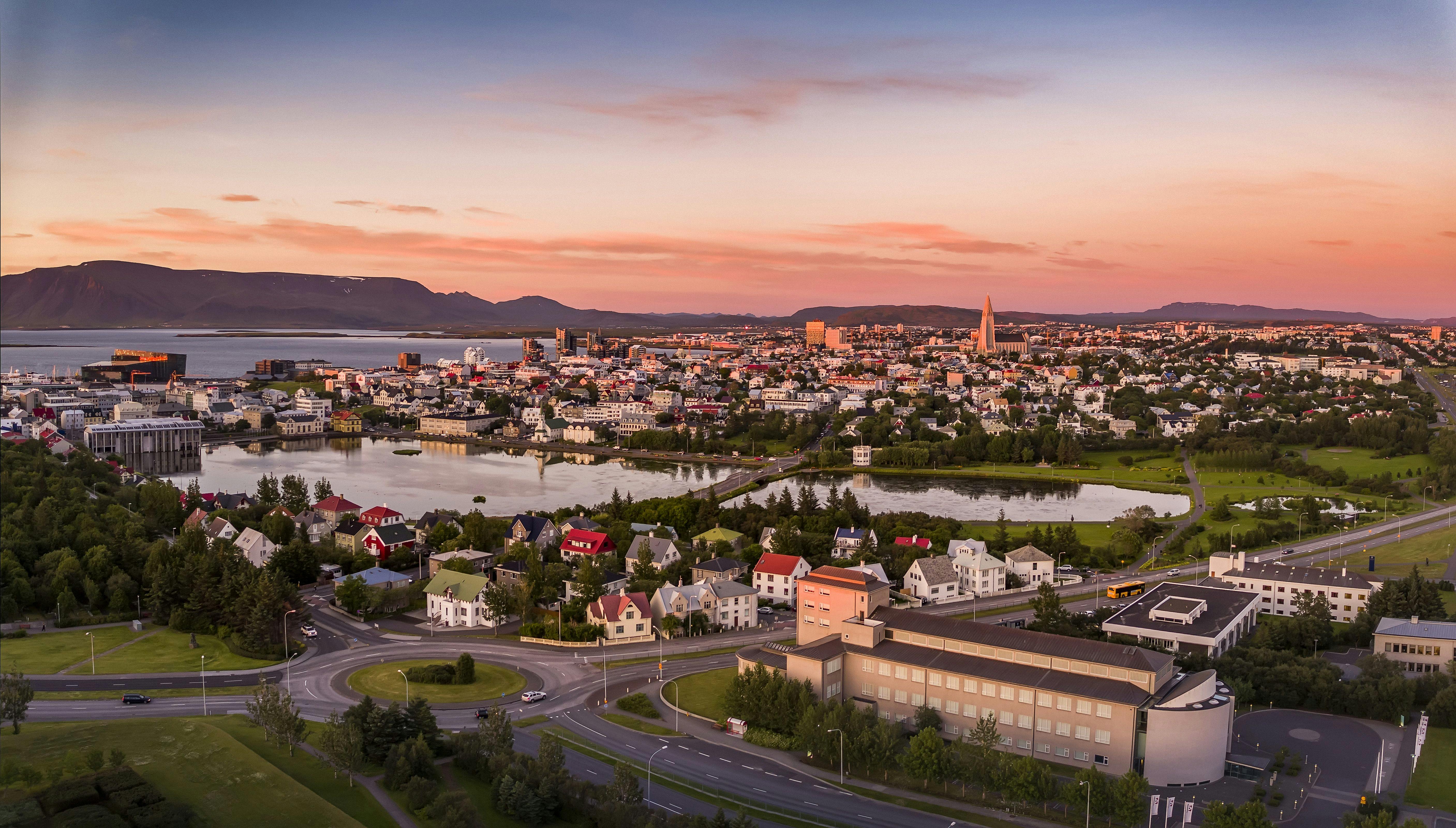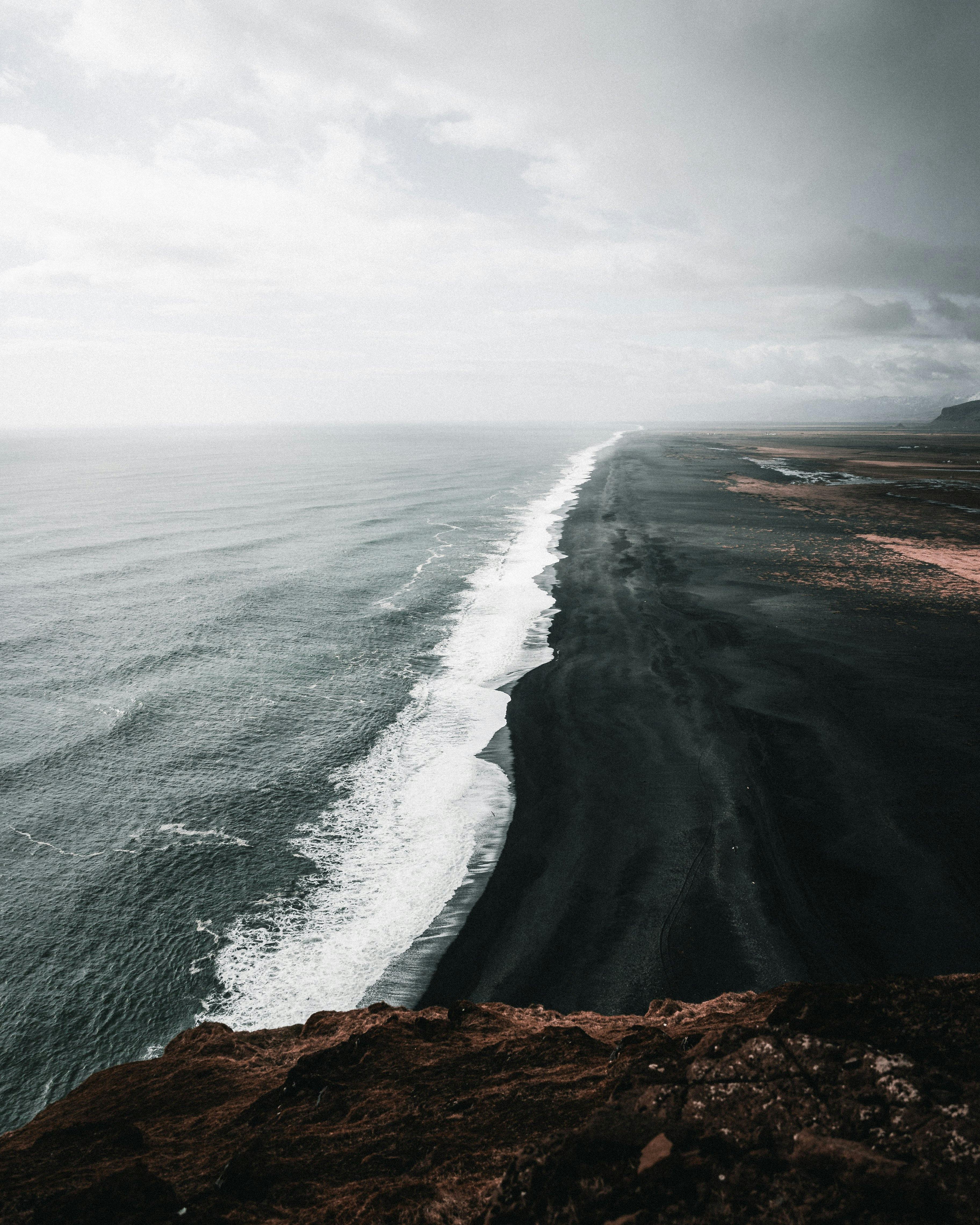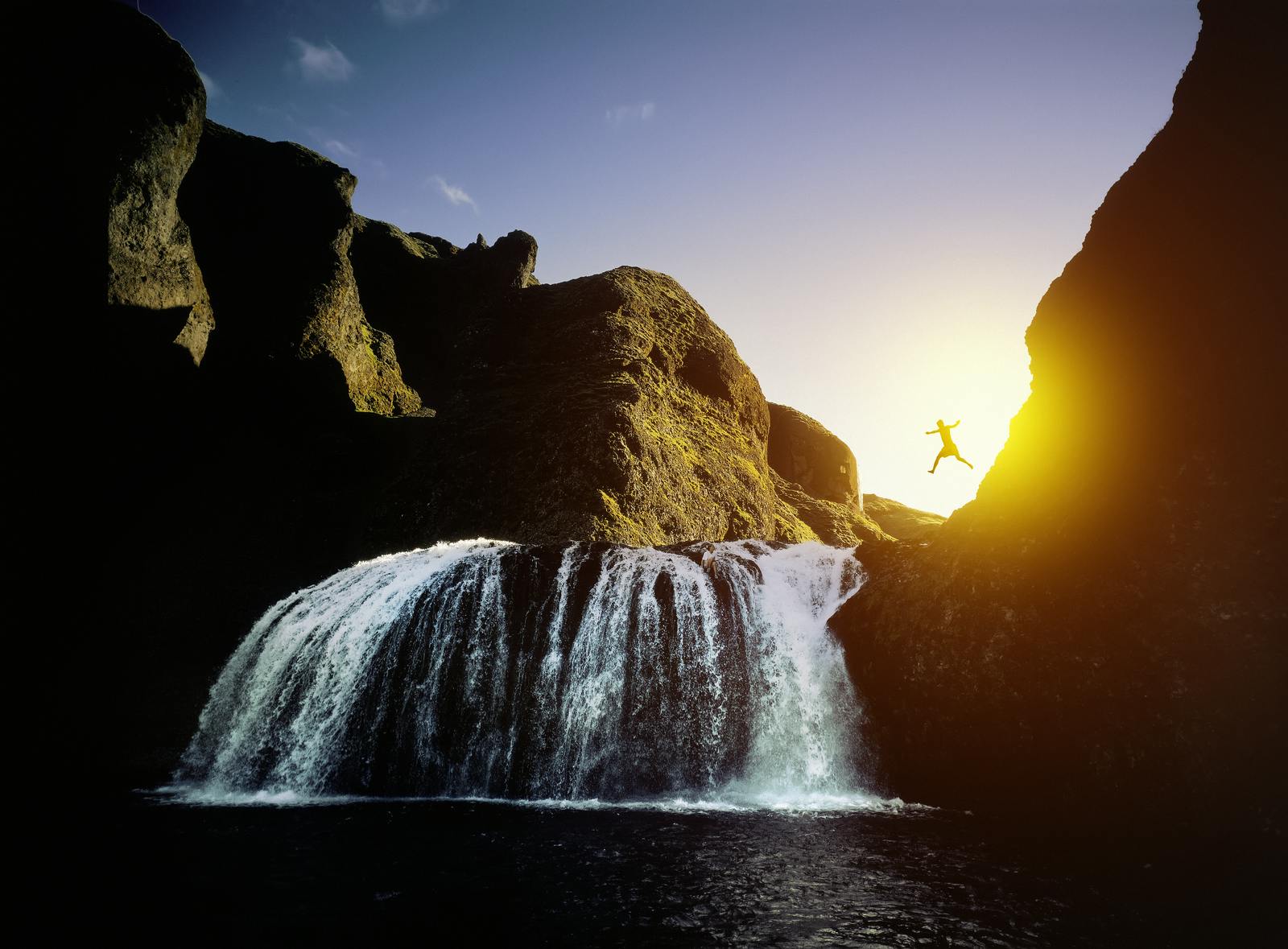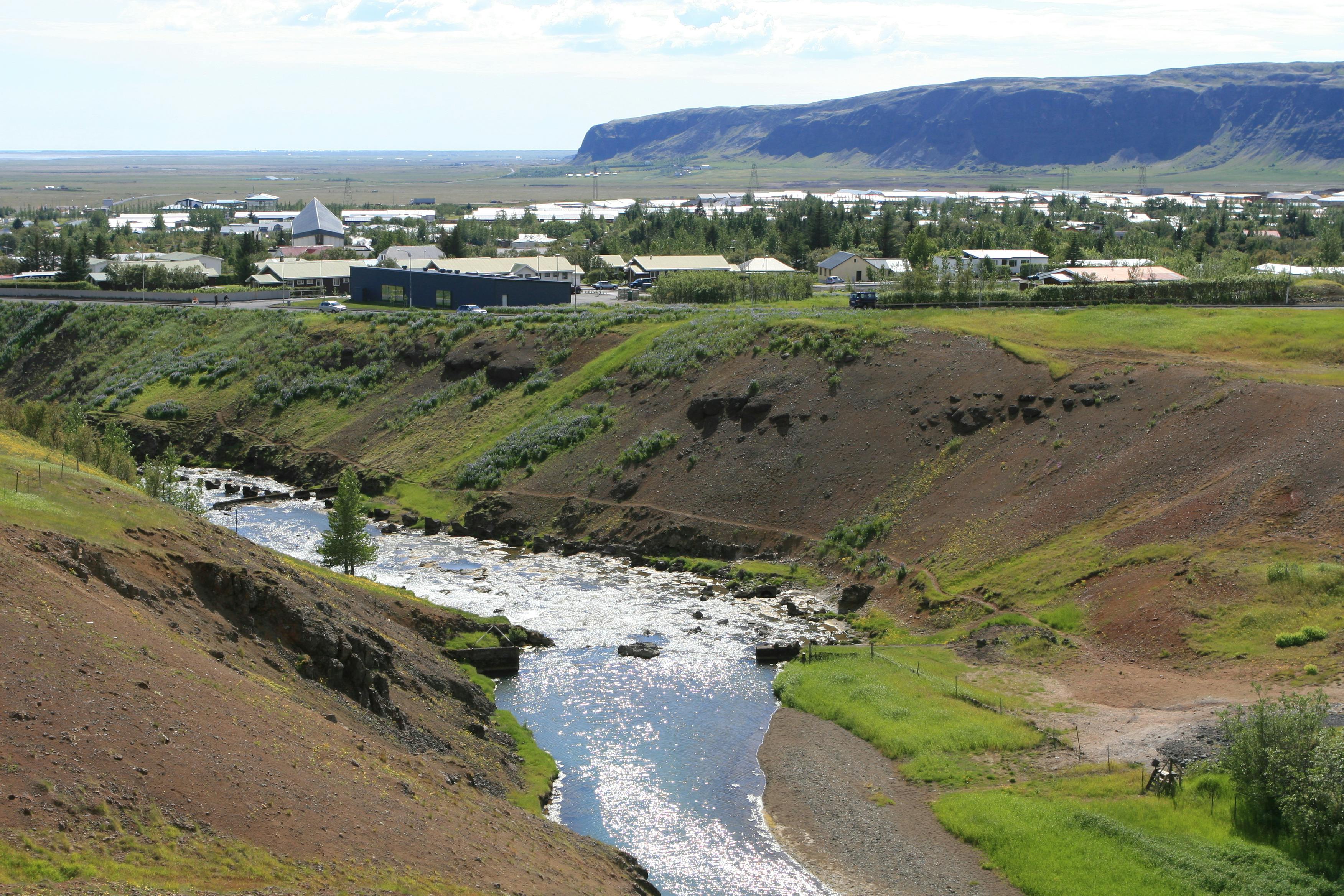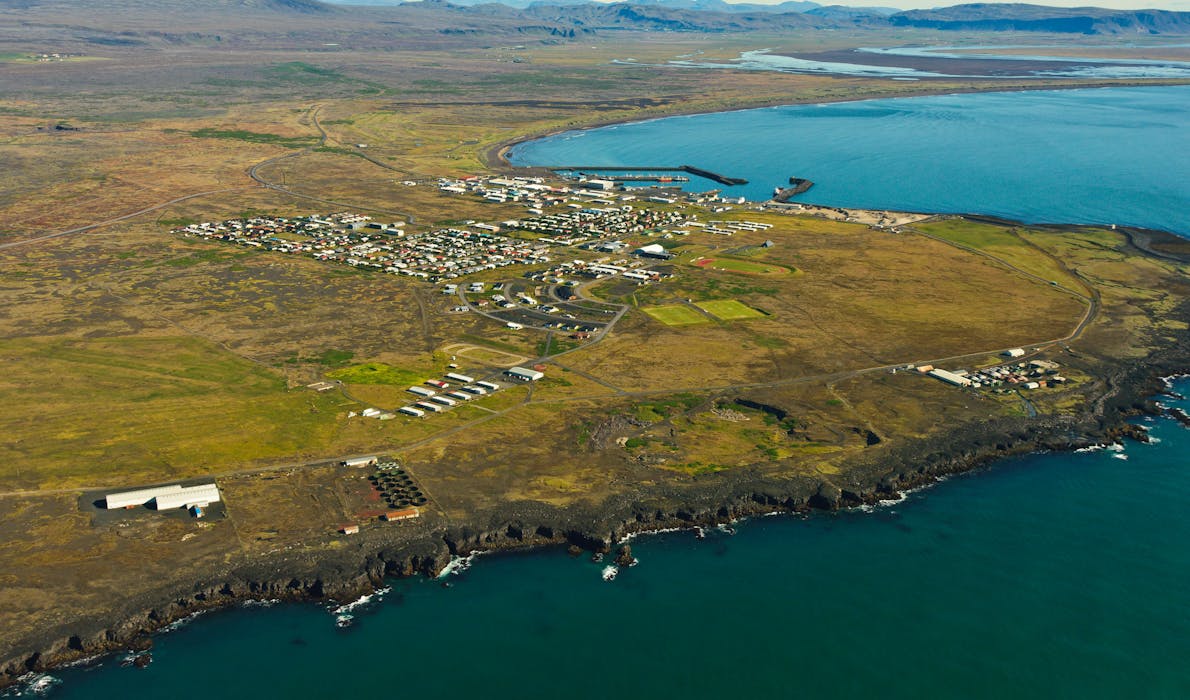
Black volcanic sand defines the southern tip of Iceland where Vík has become a major hub
Adentures in Vík on the southern tip
No other settlement has arguably been shaped more by Iceland’s tourism boom than the once-tiny Vík. For good reasons: the village sits in an atmospheric location on the tip of the southern coast, tucked between a glacier and the stormy Atlantic Ocean.
Vík, officially known as Vík í Mýrdal, is according to the Met Office the warmest of places in Iceland – when measured by mean temperatures year-round. There is still no need to pack flip-flops for the black sand beach: this is also, although unofficially, Iceland’s capital of rain thanks to the nearby glacier Mýrdalsjökull.

Vík is picture-perfect: Small red-roof church in the foreground and the towering Reynisdrangar in the background
Getting around and things to do inside town
Vík has plenty of accommodation and is a southern hub for travelers along the Ring Road. Over the last decade the village has doubled in size, to nearly 900 residents, roughly half of them migrants.
Most of the commercial activity is on the edge of town, where the Ring Road continues east, around Krónan supermarket. For a walk, however, take Víkurbraut St. to the black sand beach. Stop at Smiðjan brugghús or the Soup Company, depending on the time of day.
The red-roof church, Víkurkirkja, defining images of the village, stands up on a hill following Hátún Street. A walk up to the top of Reynisfjall (340m) offers another great view.
On the way out of town eastwards, Vik Wool Shop (Víkurprjón) sells cozy sweaters and blankets made at the factory, as well as garments from its parent company Icewear.

Reynisfjara is a beach with basalt columns, crashing waves and the iconic Reynisdrangar sea stacks
Reynisfjara and the Black Beach
Vík has a black sand beach, easily accessible, with a view of the towering Reynisdrangar sea stacks. For a closer view, however, drive to Reynisfjara beach on the other side of Mt. Reynisfjall.
Reynisfjara is among Iceland’s most visited tourist attractions, where tall waves crash on a black beach and magnificent cliffs. It is a place of force and awe.
Warning: Stay away from the shoreline. Huge ‘sneaker waves’ much larger than those in between and reaching way further are a major hazard. People have been swept away.
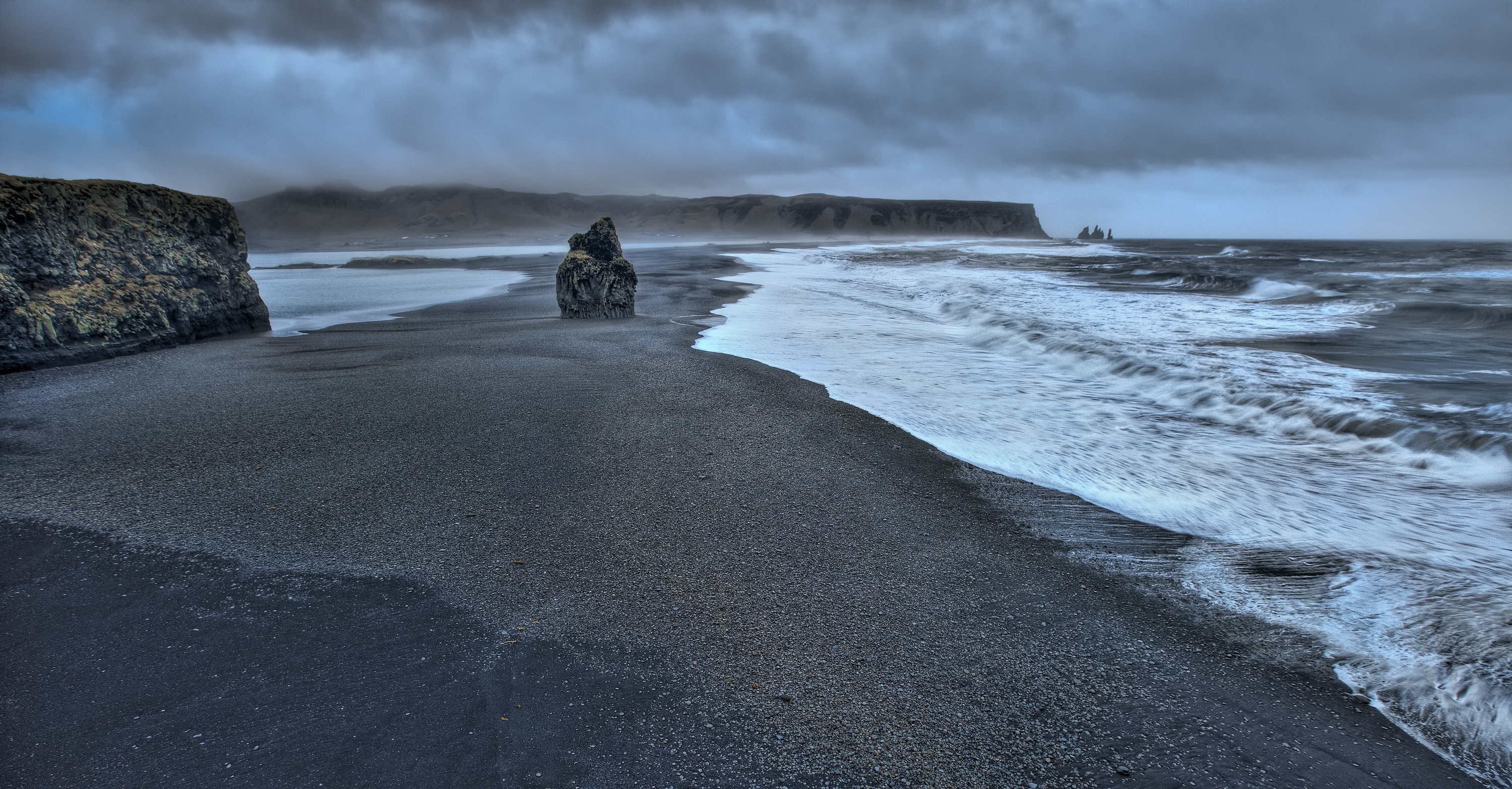
The view from Dyrhólaey at night
Dyrhólaey
Just a short drive from Vik, about 10km west, Dyrhólaey is a nature reserve known for its towering sea cliffs and abundant birdlife. Visit the iconic Dyrhólaey lighthouse, perched atop a dramatic promontory, and keep an eye out for puffins nesting in the cliffs during the summer months.
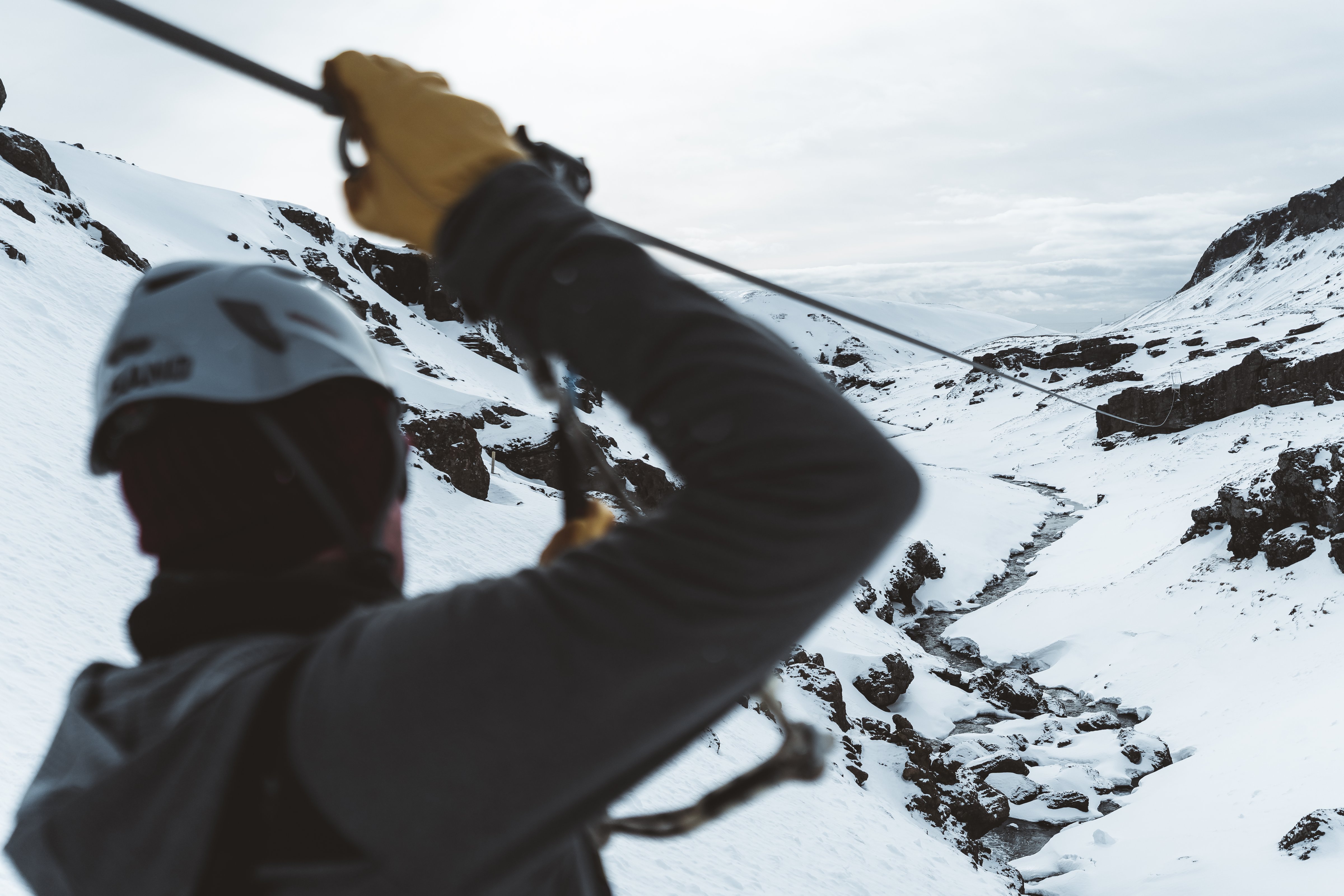
Zipline operates four ziplines of varing length over a small canyon edging Vík; walking to the top is part of the experience
Thrilling activities in Vík
Vík is not a fishing village and its long stretches of lava and sand are hardly agricultural. Tourism is thus the beating heart, with a long list of entrepreneurial enterprises.
Zipline is Vík with a view … and thrills. The company operates four ziplines of varying lengths over a small canyon; walking to the top is part of the experience.
True Adventures – a name hard to argue with – runs paragliding tours over the black sand Reynisfjara. One deep breath and you can glide like the fulmars.
An indoor volcano show may sound like a tourist trap but audiences disagree: The Lava Show in Vík – a showroom where rocks are melted into lava – has rave reviews. The guide leading this miniature eruption explains the mechanics of a volcanic eruption. (The Lava Show opened another showroom in Reykjavík in 2023.)
Beyond Vík
- Walk to the Douglas DC-3 U.S. Navy aircraft that crashed on the black beach at Sólheimasandur in 1973, a sight beloved by photographers.
- Visit the (receding) outlets of Sólheimajökull glacier, either by yourself or with a tour with the gear to walk on the ice.
- Camp at Þakgil, a spectacular campground in a mountain valley. Only 4x4 cars, and check road conditions.

